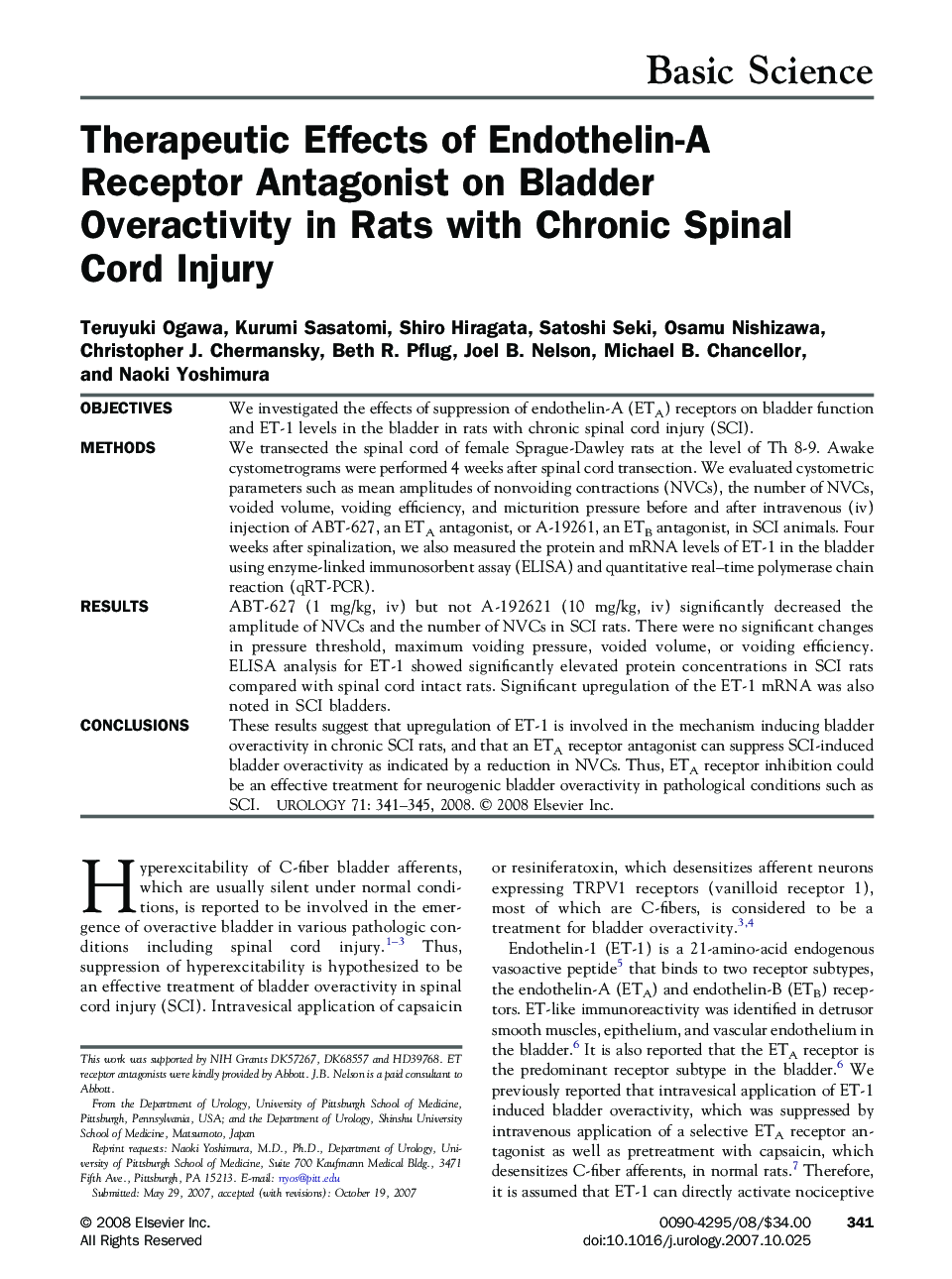| Article ID | Journal | Published Year | Pages | File Type |
|---|---|---|---|---|
| 3903499 | Urology | 2008 | 5 Pages |
ObjectivesWe investigated the effects of suppression of endothelin-A (ETA) receptors on bladder function and ET-1 levels in the bladder in rats with chronic spinal cord injury (SCI).MethodsWe transected the spinal cord of female Sprague-Dawley rats at the level of Th 8-9. Awake cystometrograms were performed 4 weeks after spinal cord transection. We evaluated cystometric parameters such as mean amplitudes of nonvoiding contractions (NVCs), the number of NVCs, voided volume, voiding efficiency, and micturition pressure before and after intravenous (iv) injection of ABT-627, an ETA antagonist, or A-19261, an ETB antagonist, in SCI animals. Four weeks after spinalization, we also measured the protein and mRNA levels of ET-1 in the bladder using enzyme-linked immunosorbent assay (ELISA) and quantitative real–time polymerase chain reaction (qRT-PCR).ResultsABT-627 (1 mg/kg, iv) but not A-192621 (10 mg/kg, iv) significantly decreased the amplitude of NVCs and the number of NVCs in SCI rats. There were no significant changes in pressure threshold, maximum voiding pressure, voided volume, or voiding efficiency. ELISA analysis for ET-1 showed significantly elevated protein concentrations in SCI rats compared with spinal cord intact rats. Significant upregulation of the ET-1 mRNA was also noted in SCI bladders.ConclusionsThese results suggest that upregulation of ET-1 is involved in the mechanism inducing bladder overactivity in chronic SCI rats, and that an ETA receptor antagonist can suppress SCI-induced bladder overactivity as indicated by a reduction in NVCs. Thus, ETA receptor inhibition could be an effective treatment for neurogenic bladder overactivity in pathological conditions such as SCI.
